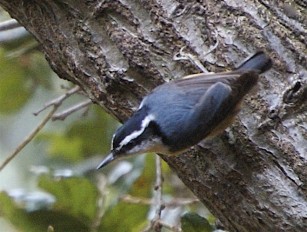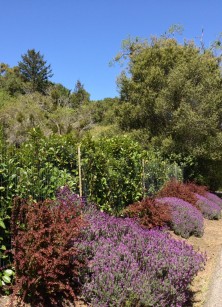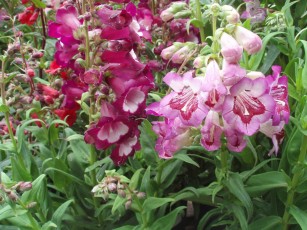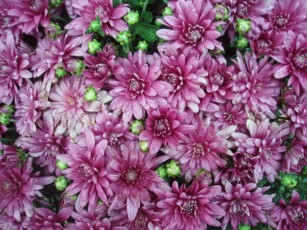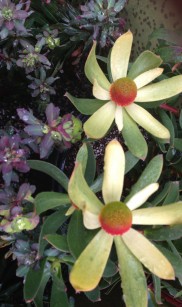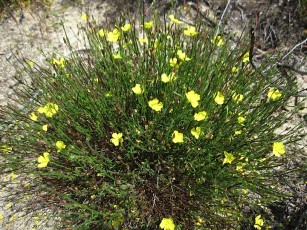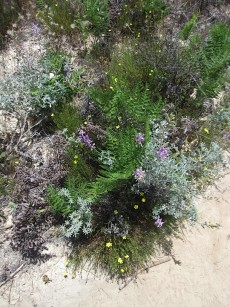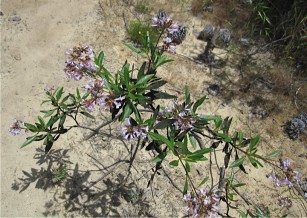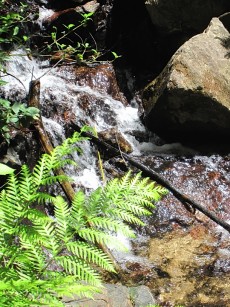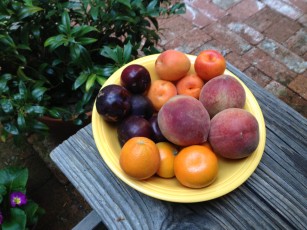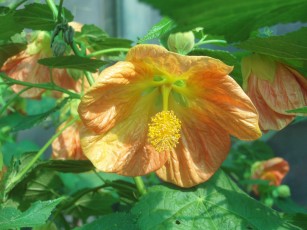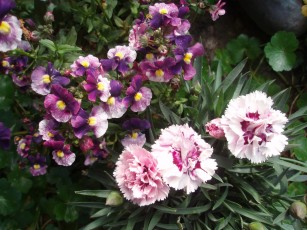Sometimes it’s the little things that count. A cool breeze on a hot day. The song of a bird up in the trees. An orange sky at sunset. As gardeners we appreciate each cluster of tiny, new tomatoes. We notice new branches growing on the ginkgo and the Japanese maple. There are many little things that make my life as a gardener easier. As I go about my chores cleaning, pruning, transplanting and watering I rely on lots of low tech tools. Perhaps some of these might make your life easier, too.
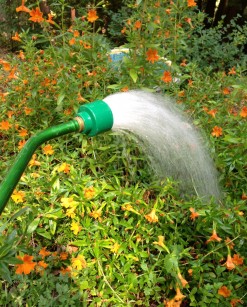 I have several different nozzles for hand watering plants but my favorite by far is a soft rain nozzle on the end of a watering wand. With this type of nozzle I can deliver a lot of water right where I want without beating the life out of the soil. The adjustable ones have a soft spray setting but not enough water comes out and I am left standing there for what seems like forever to thoroughly water a plant or pot. Hand watering is time consuming but it can help a new plant establish a much larger root system than a drip system can. There is even one wholesale plant grower who considers drip irrigation of native and drought tolerant plants just plain bad.
I have several different nozzles for hand watering plants but my favorite by far is a soft rain nozzle on the end of a watering wand. With this type of nozzle I can deliver a lot of water right where I want without beating the life out of the soil. The adjustable ones have a soft spray setting but not enough water comes out and I am left standing there for what seems like forever to thoroughly water a plant or pot. Hand watering is time consuming but it can help a new plant establish a much larger root system than a drip system can. There is even one wholesale plant grower who considers drip irrigation of native and drought tolerant plants just plain bad.
On the subject of watering, be sure you invest in a good quality hose. As my father used to say, you get what you pay for. Those small stiff hoses will cause you no end of problems on a hot day as you struggle with a tangled mess. I’m not a big fan of coiling a hose tightly inside a pot either for storage. They? look tidy but it’s really hard to pull the hose out where needed easily and quickly.
Another of my indispensable gardening items are my gloves. I’ve tried many expensive leather models but I always go back to the plastic coated stretchy cotton gloves,? Garden gloves protect your hands from infection.? You can be exposed to microbacterium from rose thorns and it’s also present in some compost materials.? Remember to always clean cuts and puncture wounds with soapy water and peroxide and see a doctor if you develop inflammation swelling or joint pain.
Whether you’re transplanting a new plant of potting up one to the next size pot, you need to loosen the 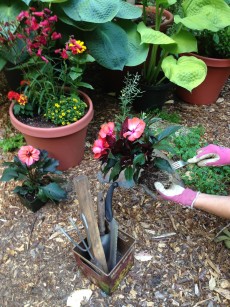 roots to help them develop a stronger root system. Sometimes the roots may have completely filled the pot and are circling around themselves. A six pack or 4″ pot often has a mat of roots at the bottom of the pot.? If you place the plant into the ground or into another pot without first loosening the roots, they will continue to grow in a circle, rather than reaching out into the soil, developing and anchoring the plant.
roots to help them develop a stronger root system. Sometimes the roots may have completely filled the pot and are circling around themselves. A six pack or 4″ pot often has a mat of roots at the bottom of the pot.? If you place the plant into the ground or into another pot without first loosening the roots, they will continue to grow in a circle, rather than reaching out into the soil, developing and anchoring the plant.
I have a claw cultivator that I use for this purpose on big plants but I find more often I’m reaching for a kitchen fork I have in my tool kit for this purpose. It’s easier for me to tease delicate root balls without going overboard. I also have an old serrated bread knife that is perfect for scoring really tough root balls. It?s also a good tool for root pruning a large plant when you need to give it fresh soil to grow in the same pot.
Of the many hand pruners on the market I have always liked my smaller Felco #6. I need to break out the pruning saw or loppers for larger cuts anyway so I why lug around a large, heavy hand pruner? I also often use kitchen shears for deadheading which makes the job go quickly. More often than not if I use my thumb and forefinger to remove old flowers I break off more than I intended. Using a scissors instead I can make a clean cut and not tear off a new bud by mistake.
My last tip is the best one. Make a habit of walking around your garden, preferably with the beverage of your choice, and just look at the plants. That way you can monitor pest and disease problems before they get out of hand and decide what to do. Give this step the fancy name Integrated Pest Management and enjoy your garden.

